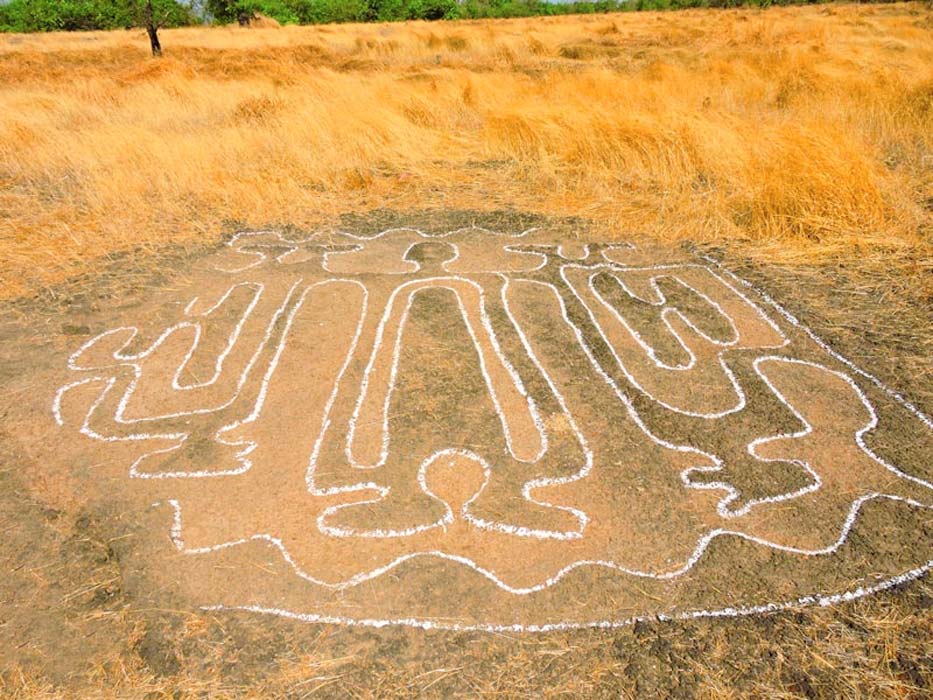A Gallery of Hidden Prehistoric Rock Art Points to Lost Indian Civilization
India is a land of many civilizations. Now it appears that another one has been uncovered in the west of the country. A team of explorers has discovered a number of petroglyph sites that belonged to an ancient society that was previously unknown. The discovery of the primitive art is allowing experts to study what seems to be a lost Indian civilization and to understand more about the subcontinent's very complex prehistoric past.
Primitive rock carvings in Western India
The petroglyphs or rock carvings are located in the hills of the Konkan region of Maharashtra, mainly in the districts of Ratnagiri and Rajapur. The rock art was created by removing or carving exposed stone. There are believed to be thousands of these rock carvings in the Konkan area, all presumably belonging to a lost Indian civilization. They are generally located near villages and some are familiar to locals and tourists but many more have now been discovered and not even local residents were aware of their existence.

Many of the carvings contain human shapes. (Ratnagiri Tourism)
Explorers discover the ancient art phenomena
The rock art was discovered by two explorers, Sudhir Risbood and Manoj Marathe who began a systematic survey of the area after finding some images. The duo has led teams on hikes across a vast area of the hilly region looking for rock art. The carvings were often buried beneath earth and mud, but others could still be seen. Those that were out in the open are considered holy by the local communities.
The team enlisted local students to help to identify carvings and to gather local tales on the images. The BBC reports that this provided the experts with "a lot of valuable information". Apart from identifying individual rock carvings the explorers are documenting and recording the petroglyphs. Risbood and Marathe have been tireless in their efforts to raise awareness of the carved figures. They are also actively lobbying the local government to support efforts to study and conserve the prehistoric works of art.

Images seem to vary in type and sophistication. (Ratnagiri Tourism)
The legacy of the lost Indian Civilization
One of the most remarkable things about these images is that there are so many of them and that they are so diverse. There are carvings representing humans, animals, birds, and geometric shapes. It is hard to date the carvings, but it is estimated that some of the recent finds are the Neolithic period and possibly some of the oldest discovered.
The images allow experts to understand something of this forgotten Indian civilization. According to the Smithsonian, the director of the Maharashtra state archaeology department “suspects the original artists may have come from a hunter-gatherer society.” The lack of domesticated animals would show that they were not an agricultural society and therefore would be reliant on hunting and gathering. Some of the images are of sea creatures and indicate that the society was one that was also dependent on fishing. These carvings are reminiscent of others found on other continents.
- 4,000-Year-Old Copper Crown Found in India
- Art Relics Shed Light on Mysterious Ancient Civilization
- Lost Star of Myth and Time: The Rise and Fall of Civilizations
Non-native animal enigma
Most of the older images are of animals that lived in this part of India in prehistoric times. While the images are of recognizable animals and humans, their meanings have not been deciphered. Another mystery is there are images of rhinos and hippos and these are not native to this part of India. Iflscience has reported that experts are baffled at “how exactly the artists were able to produce recognizable carvings of non-native species.” The rhino can be found elsewhere in India, the hippo is not native to the sub-continent.
To explain why representations of non-native animals were carved, several theories have been put forward. Some speculate that the people who made the images had recently migrated from Africa. Then there are those who argue that hippopotamuses once lived in the region. There are also suggestions that the rhinoceros was much more common in India in the prehistoric era than in historical times.

Sophisticated designs have been found, along with simple animal shapes. (Ratnagiri Tourism)
What do the carvings tell us?
Risbood and Marathe have been successful in their efforts to secure more state support for their investigations of the rock art. The state government of Maharashtra has pledged funds for the study of several hundred of the rock carvings. It is expected that this will allow for more knowledge to be obtained about the rock carvings and the society that produced them. However, it is believed that the meanings of the glyphs will remain mysterious. While the origin and the ultimate fate of this lost Indian civilization will be even harder to establish.
Top image: Sophisticated rock carvings in Ratnagiri, India indicate a lost Indian civilization. Source: Ratnagiri Tourism
By Ed Whelan



















